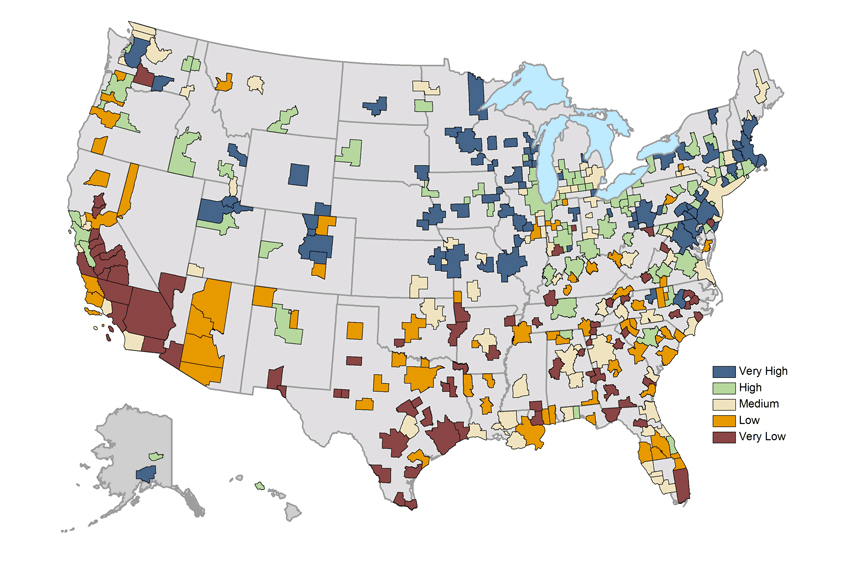 Using a new online tool, researchers have measured more than 360 U.S. metros for their capacity to handle stresses ranging from economic recession to natural disasters.
Using a new online tool, researchers have measured more than 360 U.S. metros for their capacity to handle stresses ranging from economic recession to natural disasters.
Overall, Northeastern and Midwestern regions tend to be more resilient than those in the South or West, largely because these regions earn high scores for affordability, the size of their health-insured population, rates of homeownership, and metropolitan stability, as measured by recent population change.
The Resilience Capacity Index (RCI), developed by Kathryn Foster, a professor of urban and regional planning at the University at Buffalo, produces a single statistic for each region based on the region’s performance across 12 economic, socio-demographic, and community connectivity indicators.
As a gauge for how well a region is positioned to adapt to stress, the index can help regional leaders identify strengths and weaknesses and target related policy changes toward building their resilience capacity.
“Conceiving of regions as capable of adapting and transforming in response to challenges allows researchers and practitioners to understand the conditions and interventions that may make one place more or less resilient and why,” says Foster.
Foster developed the index as part of Building Resilient Regions, a national network of experts on metropolitan regions funded by the John D. and Catherine T. MacArthur Foundation and administered by the University of California, Berkeley. The index features maps revealing geographic patterns in resilience capacity, detailed data profiles for each metro and a “compare metros” tool.
The top-scoring metros are geographically diverse. Raleigh, N.C., with leading technology firms, medical centers and universities, heads the economic category. Ames, Iowa, ranks first for socio-demographic capacity due to its exceptionally high level of educational attainment (Iowa State University is located there). For community connectivity, Bismarck, N.D., scores highest given its critical mass of civic institutions as the state capital.
Metropolitan areas with populations over 1 million vary widely in their resilience capacity. The top-ranking large metropolitan area, Minneapolis-St. Paul, achieves its status with very high socio-demographic capacity and levels of community connection, the latter reflecting the region’s No. 1 rank for voter participation.
The lowest-ranking large metropolitan area is Miami, Fla., a region with very low regional affordability and income equality.
Foster points out that a region’s RCI score is not necessarily a sentence for success or failure in the face of the next population boom, economic recession, or industry shutdown.
“What it does tell us is that some regions are structurally more prepared than others, and thus have greater capacity to bounce back in the wake of stress,” she says. “Still, regions with a high capacity for resilience can squander their strengths just as those ranked low can rise to the occasion and perform above expectations.”
Additional research efforts, a number of which are highlighted on the Building Resilient Regions site, are under way to measure how regions actually respond to stress. Future studies will explore which resilience capacity measures matter most for different kinds of stresses as well as the significance of key governance and environmental factors not captured by the RCI.
Looks like King County is one of only two (both in Washington) areas resilient on the West Coast.